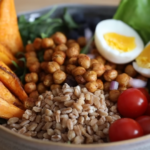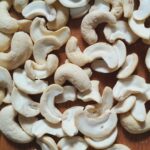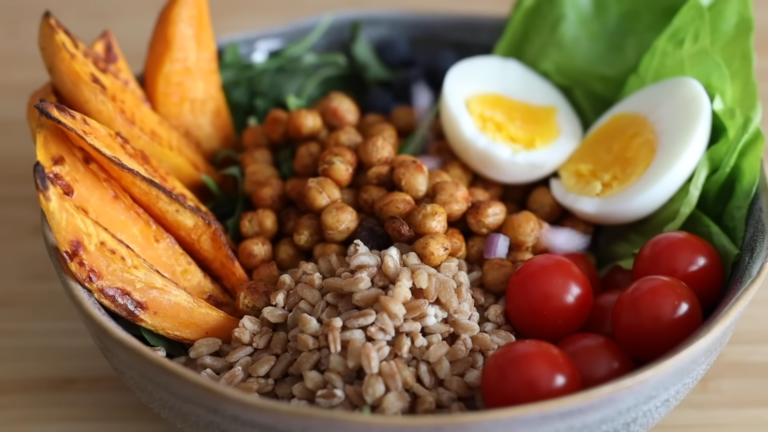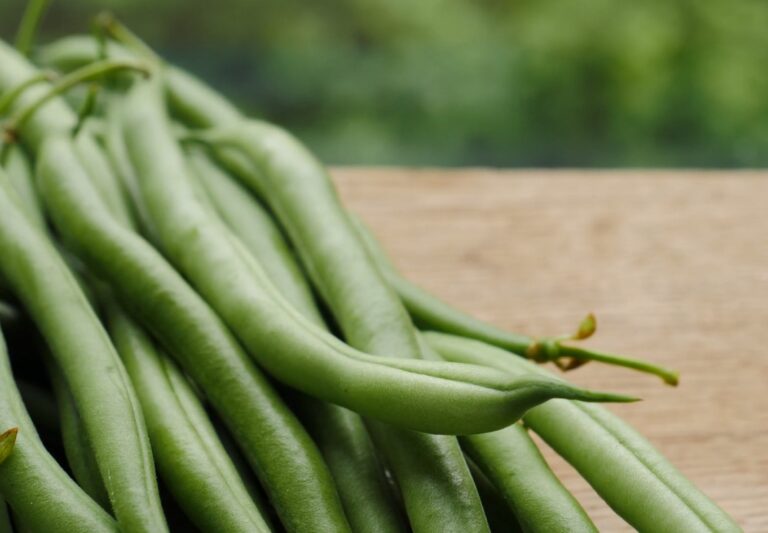In the realm of health and nutrition, chia seeds have emerged as a popular superfood. But when it comes to introducing them to the diets of babies and children, opinions are divided. Here’s a comprehensive look into the benefits, concerns, and ways to incorporate chia seeds into your child’s diet.
Page Contents
- 1 Can Babies Eat Chia Seeds?
- 2 Chia Seeds for Older Children
- 3 Nutritional Value
- 4 Benefits of Chia for Babies, Toddlers, and Children
- 5 Are There Any Side Effects?
- 6 Delicious Recipes for Kids
- 7 FAQ
- 7.1 Are chia seed allergies common?
- 7.2 How can they be used as an egg substitute?
- 7.3 How to prepare for babies following a baby-led weaning approach?
- 7.4 Is there a difference between black and white varieties?
- 7.5 How to store them?
- 7.6 Can babies eat chia seeds every day?
- 7.7 How to make chia fun for kids?
- 7.8 Are they keto-friendly?
- 7.9 Can they be eaten raw?
- 7.10 Are they good for weight loss?
- 7.11 Are Chia seeds gluten-free?
- 7.12 Safe during pregnancy?
- 7.13 Which Chia seeds are best?
- 7.14 Can they be cooked?
- 7.15 Can Chia seeds cause diverticulitis?
- 8 Conclusion
Can Babies Eat Chia Seeds?
While some experts believe that babies shouldn’t consume chia seeds as their digestive system might not process them the same way adults do, others argue that they can be gradually introduced into a baby’s diet.
A common misconception once surrounded chia seeds, suggesting they posed a choking hazard, leading to breathlessness in infants. Yet, after a thorough evaluation of their nutritional advantages, many pediatric experts have endorsed their consumption for young ones.
Chia seeds are a powerhouse of essential nutrients, including omega-3 fatty acids and vitamin B12, among others. But just like anything else, it’s best not to go overboard. Giving too many can upset a baby’s tummy, so a little goes a long way.
When Can You Introduce Them to Your Baby?

Chia seeds can be introduced to babies as soon as they have learned to chew on finger foods, which is typically around 8 months of age.
If you’re eager to introduce chia seeds earlier, a safe way is to soak them and blend them into a smooth consistency. Alternatively, you can let the seeds soak and then offer just the nutrient-rich liquid to your little one, leaving the seeds behind. This method ensures your baby gets some of the goodness without the risk.
How Much is Just Right?
According to some sources, babies can start benefiting from chia seeds as they begin their journey with solids. As your baby grows, from 6 to 12 months, you can give the amount of 1 teaspoon daily, either mixed in food or sprinkled on cereals.
For toddlers aged between 12 months to 5 years, a daily intake of 2 teaspoons (10g) is recommended. This can be mixed into their meals or sprinkled over their breakfast cereals.
Additionally, mothers can incorporate chia seeds into their diet with a daily serving of 1 tablespoon (15g). They can be sprinkled on cereals and salads, blended into smoothies, or even used as a fat substitute in baking recipes.
As with any new food introduction, it’s essential to monitor your baby’s reaction and consult with a pediatrician if you have any concerns.
Chia Seeds for Older Children
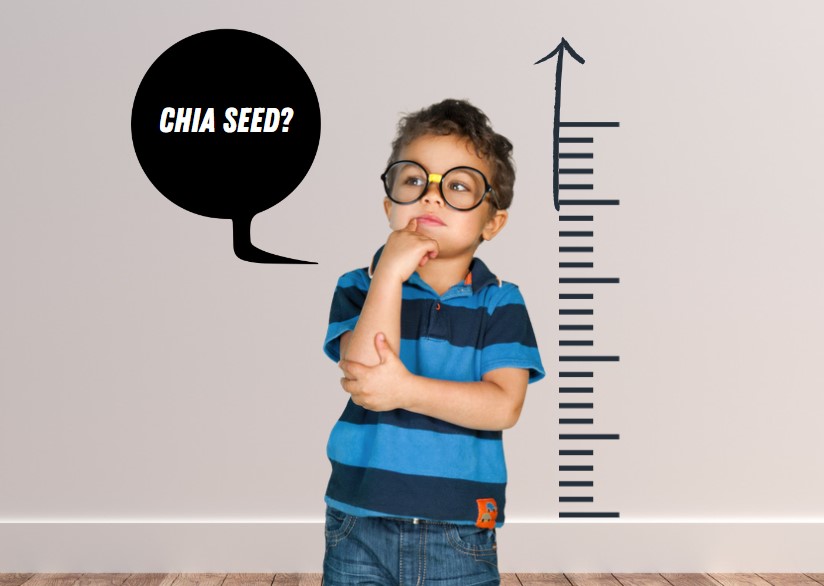
These seeds are not just rich in fiber but also offer a plethora of micronutrients, making them versatile ingredients for various dishes suitable for children and teens.
The US Food and Drug Administration (USFDA) has given chia seeds a nod of approval, categorizing them as (GRAS) ‘generally recognized as safe’. This means children and teens can safely consume chia seeds as part of a balanced diet.
However, there’s a catch. It’s recommended that chia seeds be consumed only after being soaked in water, milk, or semi-liquid foods like yogurt. This is because dry or inadequately soaked seeds might pose a risk of gastrointestinal blockage.
When properly soaked, chia seeds absorb liquid, taking on a gel-like consistency that’s easier to swallow and digest.
When it comes to quantity, there isn’t a strict daily limit for this food for older children and teens. A general guideline suggests adding a teaspoon of soaked chia seeds to their meals daily.
If your child isn’t accustomed to a high-fiber diet, it’s best to introduce them gradually. For specific recommendations tailored to your child’s needs, it’s always a good idea to consult with a pediatric nutritionist or a pediatrician.
Nutritional Value
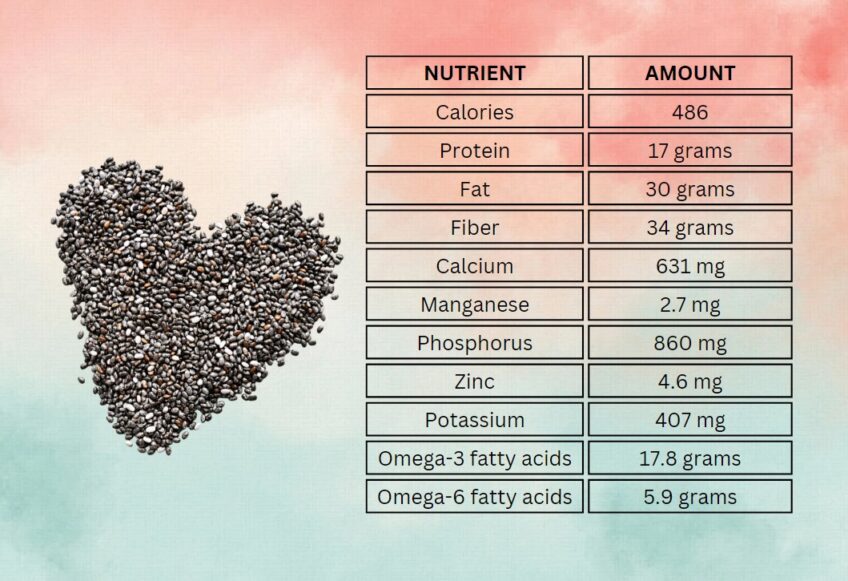
Chia seeds are a powerhouse of nutrition. Here’s a breakdown of the nutritional content for 3.5 ounces (100 grams) of these tiny wonders:
| Nutrient | Amount |
|---|---|
| Calories | 486 |
| Protein | 17 grams |
| Fat | 30 grams |
| Fiber | 34 grams |
| Calcium | 631 mg |
| Manganese | 2.7 mg |
| Phosphorus | 860 mg |
| Zinc | 4.6 mg |
| Potassium | 407 mg |
| Omega-3 fatty acids | 17.8 grams |
| Omega-6 fatty acids | 5.9 grams |
Benefits of Chia for Babies, Toddlers, and Children

Chia seeds, often referred to as “super sprinkles” for little ones, are packed with numerous health benefits that cater to the unique nutritional needs of babies, toddlers, and children:
| Nutrient | Benefit |
|---|---|
| Omega 3 Fatty Acids | Supports growth and development |
| Fibre | Keeps the digestive system healthy |
| Calcium | Strengthens bones |
| Zinc | Boosts immune function |
| Phosphorus | Contributes to bone health and tissue maintenance |
| Manganese | Essential for metabolism, growth, and development |
Delving deeper into the benefits, particularly the fiber content, we find that chia plays a significant role in digestive health.
Relief from Constipation
Chia seeds are a natural source of dietary fiber, which aids in promoting regular bowel movements. For babies and toddlers transitioning to solid foods, constipation can sometimes be a concern.
Incorporating them into their diet can help alleviate this issue by softening stools and ensuring a smoother digestive process.
Parents can mix soaked chia seeds into purees or yogurts to introduce this benefit.
Strong Teeth and Bones

Calcium is a vital mineral for the development of robust teeth and bones, and chia seeds are a rich source of it.
Additionally, with the presence of vitamin D in some chia seed preparations, the absorption of calcium is enhanced. This combination ensures that children’s growing skeletal structures receive the support they need.
Sprinkling chia seeds on cereals or blending them into smoothies can be a delicious way to deliver this benefit.
Supports Growth
The early years of a child’s life are marked by rapid growth and development. Chia seeds provide essential nutrients like iron, which is crucial for healthy blood, and omega-3 fatty acids, vital for brain development and cognitive functions.
By incorporating chia seeds into daily meals, parents can ensure that their children receive these essential nutrients to support their growth spurts.
Boosts Immune Health
A healthy gut often translates to a robust immune system. Chia seeds, enhanced with probiotics, support gut health by promoting a balance of beneficial bacteria.
These probiotics not only aid digestion but also play a role in strengthening the body’s defense mechanisms against illnesses. Given the exposure children have at playgrounds and schools, a strong immune system is invaluable.
Easy Digestion
Digestive comfort is essential, especially for younger children. Chia seeds undergo a cold-milling process, ensuring that the nutrients are easily absorbed and digested. This process makes chia seeds suitable for even the youngest members of the family, starting from 8 months. Whether it’s in a pudding form or mixed into oatmeal, these seeds can be a gentle addition to a baby’s diet.
Are There Any Side Effects?
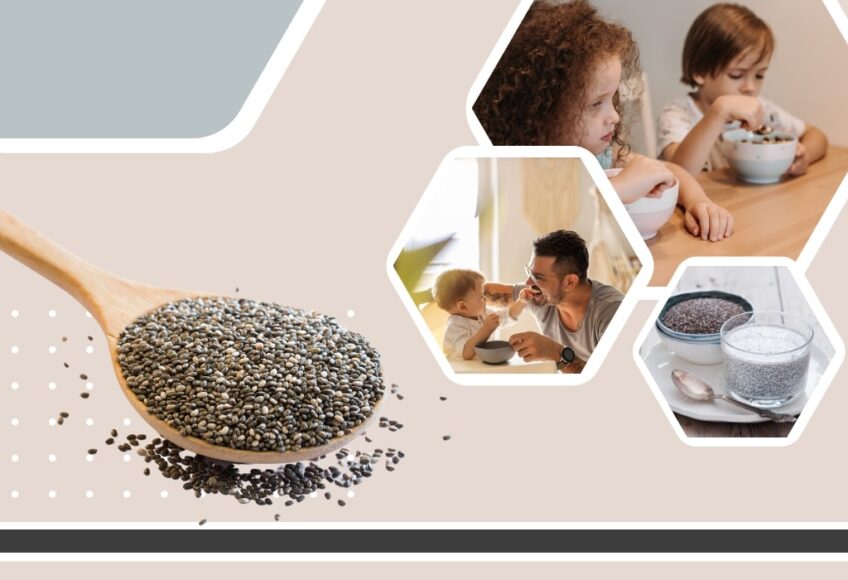
Chia seeds, while packed with numerous health benefits, are generally safe to consume for most individuals, including babies. However, like any food, they are not without potential concerns.
One of the primary concerns is the risk of allergies. Although chia seed allergies are rare, they are not unheard of. A study from 2019 highlighted that chia seeds have structural similarities with other allergenic foods, such as sesame seeds and hazelnuts.
This resemblance might lead to cross-sensitization in some individuals. Therefore, if a baby exhibits any unusual symptoms after consuming chia seeds, it’s crucial to stop the intake and consult with a pediatrician.
Another aspect to consider is the high fiber content. While fiber is beneficial for digestive health, excessive consumption can lead to digestive discomfort, especially in babies with developing digestive systems.
It’s always recommended to introduce chia seeds gradually and in moderation to a baby’s diet. Additionally, due to their ability to expand upon contact with moisture, there’s a potential choking hazard, especially if chia seeds are consumed dry. To mitigate this risk, it’s advised to soak the seeds before serving to babies and ensure they are well-hydrated.
Precautions to Take While Introducing Chia For Babies
- Choking Hazard: Dry chia seeds can pose a choking risk as they expand upon contact with moisture, such as saliva. Always soak them before offering them to babies to ensure they are soft and well-hydrated. Avoid giving spoonfuls of dry seeds.
- Allergy Concerns: While allergies are rare, they are possible. It’s essential to introduce chia seeds in small amounts initially and monitor for any allergic reactions such as hives, swelling, or difficulty breathing. If any unusual symptoms appear, stop the intake and consult with a pediatrician.
- Digestive Discomfort: Due to their high fiber content, excessive consumption of chia seeds can lead to digestive discomfort, including gas or bloating. Start with small quantities and gradually increase the amount as your baby gets accustomed to it.
- Anti-Nutrients: They contain anti-nutrients like oxalates, which can interfere with the absorption of certain minerals when consumed in large amounts. While the levels in chia seeds are not alarmingly high, it’s still a good idea to offer them in moderation.
- Texture and Consistency: Ensure that the texture of the chia seed dish is appropriate for your baby’s developmental stage. For younger babies, chia seed puddings or gels mixed with purees can be a good option. As they grow older and their chewing skills develop, you can introduce more textured preparations.
- Mix with Familiar Foods: When introducing chia seeds for the first time, it can be helpful to mix them with foods your baby is already familiar with. This can make the new experience less daunting and more acceptable.
- Safe Eating Environment: Always ensure that your baby is seated upright when eating and is under constant supervision. This reduces the risk of choking and allows for immediate intervention if needed.
- Consultation: Before introducing any new food, including chia, it’s always a good idea to consult with a pediatrician or nutritionist. They can provide guidance tailored to your baby’s specific needs.
Delicious Recipes for Kids
1. Creamy Chia Pudding
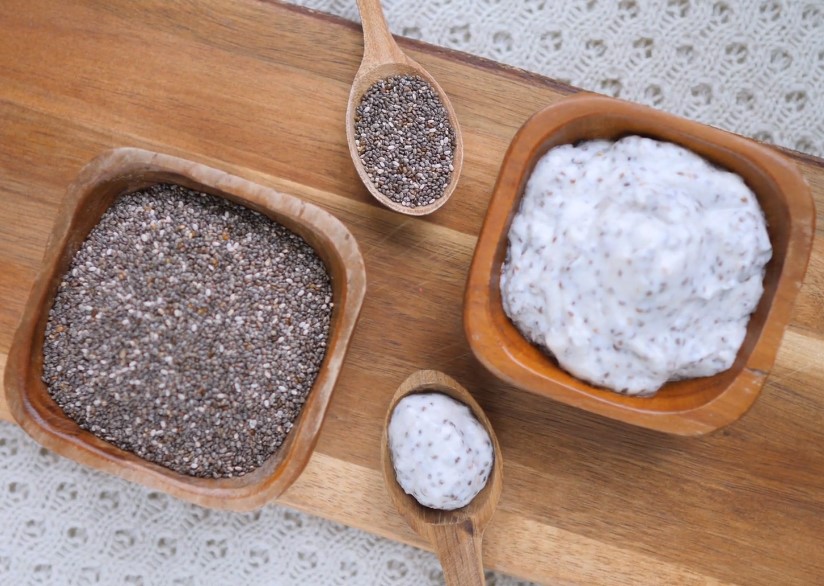
Yield: 2 cups (480 grams)
Cooking time: 5 minutes + overnight soak
Age suggestion: 6 months and up
Ingredients:
- 1 ripe banana
- ¾ cup (180 ml) unsweetened coconut milk
- 3 tbsp (45 ml) chia seed
- ½ tsp (1 g) ground cinnamon
Note: This recipe contains coconut, which, while a rare allergen, is classified as a tree nut by the United States Food and Drug Administration. Only serve to a child after this allergen has been safely introduced.
Directions:
- Preparation: Make the pudding the day before you plan to serve it so it’s ready the next morning.
- Mash the Banana: Peel and mash the banana, then scoop it into a small glass jar with a sealed lid. A 2- or 3-cup (480- or 720-ml) mason jar works perfectly.
- Mix Ingredients: Add the coconut milk, chia seeds, and cinnamon to the jar.
- Shake: Seal the jar, then shake vigorously to combine.
- Refrigerate: Place the jar in the refrigerator to chill until the seeds have expanded and the mixture has thickened, at least 3 hours or overnight.
- Serve: Offer chia seed pudding and let your child self-feed. If help is needed, pre-load a spoon with pudding, then hold the utensil in the air in front of your child and let them grab it from you. Eat some chia seed pudding alongside the child to model how it’s done.
Storage: This pudding can be stored in an airtight container in the refrigerator for up to 3 days.
Pairings: Chia seeds pair well with corn, cranberry bean, cow’s milk, lima bean, pumpkin, and quinoa.
This creamy chia pudding is not only delicious but also packed with nutrients beneficial for both babies and adults. The combination of banana and coconut milk gives it a naturally sweet taste, while the chia seeds provide a delightful texture and a host of health benefits. Enjoy this versatile dish as a breakfast, snack, or dessert!
2. Chia Seed Jam
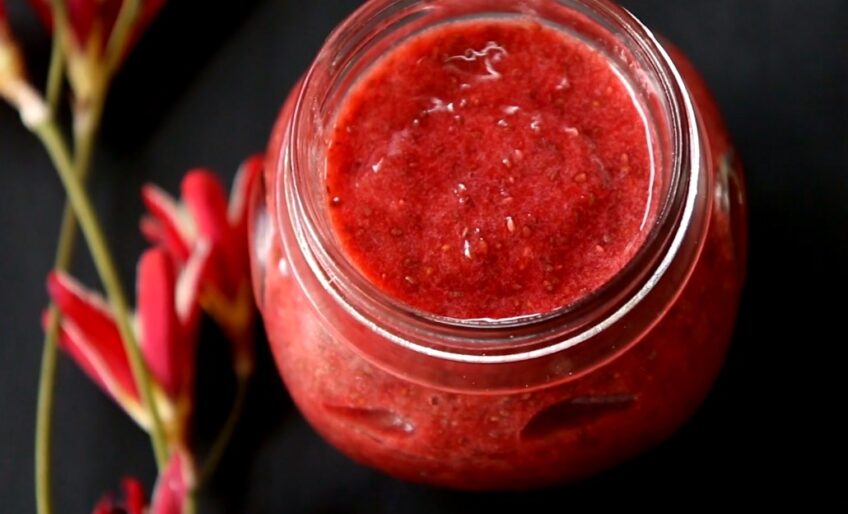
Yield: 1 cup (240 grams)
Cooking time: 10 minutes + 2 hours chilling
Age suggestion: 8 months and up
Ingredients:
- 2 cups fresh or frozen berries (like strawberries, blueberries, or raspberries)
- 2 tbsp (30 ml) chia seeds
- 1-2 tbsp (15-30 ml) maple syrup or honey (avoid honey for children under 12 months)
Directions:
- Cook the Berries: In a saucepan, heat the berries over medium heat until they start to break down and become syrupy, about 5-7 minutes.
- Add Sweetener: Stir in the maple syrup or honey and taste, adjusting sweetness if needed.
- Stir in Chia Seeds: Remove from heat and stir in the chia seeds.
- Chill: Transfer the mixture to a jar and refrigerate for at least 2 hours to thicken.
- Serve: Spread the jam on toast, mix into yogurt, or use as a topping for pancakes.
Storage: Store in an airtight container in the refrigerator for up to a week.
3. Chia Seed Smoothie Bowl
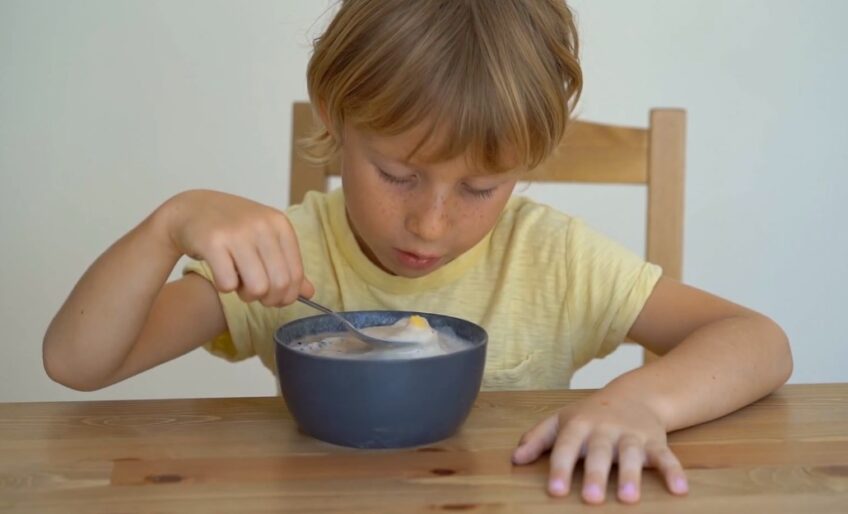
Yield: 1 bowl
Cooking time: 5 minutes
Age suggestion: 10 months and up
Ingredients:
- 1 ripe banana
- ½ cup (120 ml) Greek yogurt or any plant-based yogurt
- 1 tbsp (15 ml) chia seeds
- ½ cup (120 ml) mixed berries (like strawberries, blueberries, or raspberries)
- A splash of milk (cow’s milk, almond milk, or any preferred milk)
- Toppings: granola, sliced fruits, nuts (for older kids)
Directions:
- Blend: In a blender, combine the banana, yogurt, chia seeds, mixed berries, and a splash of milk. Blend until smooth.
- Pour: Transfer the smoothie to a bowl.
- Add Toppings: Decorate the top with granola, sliced fruits, and nuts if using.
- Serve: Provide a spoon and let your child enjoy the creamy and nutritious bowl.
Note: Ensure the toppings are age-appropriate to avoid any choking hazards.
FAQ
Are chia seed allergies common?
Allergies to chia seeds are rare but not unheard of. There’s limited evidence suggesting that individuals allergic to sesame might also react to chia seeds. It’s always best to consult with an allergist before introducing chia seeds, especially if there’s a suspected sesame allergy.
How can they be used as an egg substitute?
Combine 1 part chia seeds with 3 parts warm liquid and let it gel for at least 30 minutes. One large egg is roughly equivalent to 1 tablespoon (15 grams) of chia seeds mixed with 3 tablespoons (45 milliliters) of liquid.
How to prepare for babies following a baby-led weaning approach?
For babies aged 6 to 12 months, pre-soaked seeds can be stirred into porridges or yogurts. For toddlers aged 12 to 18 months, continue with soft foods containing pre-soaked chia seeds. By 18 to 24 months, they can be added to thicken fruit smoothies or used in other dishes like oatmeal.
Is there a difference between black and white varieties?
Both are nutritionally similar. Some research suggests the Salba variety of white chia might have slightly higher fiber and healthy fats.
How to store them?
Store in an air-tight container. Whole chia can be kept at room temperature for up to 18 months. Ground chia should be refrigerated and lasts up to a year.
Can babies eat chia seeds every day?
Yes, but in moderation. Chia seeds are nutrient-dense and offer numerous health benefits, including omega-3 fatty acids, fiber, and essential vitamins and minerals.
However, due to their high fiber content, excessive consumption can lead to digestive discomfort. It’s always essential to introduce any new food, including chia seeds, gradually and observe for any adverse reactions. As with any dietary considerations for babies, it’s best to consult with a pediatrician or nutritionist for personalized guidance.
How to make chia fun for kids?
To make chia seeds fun for kids, try creating colorful puddings layered with fresh fruits and yogurt, resembling a dessert parfait. Additionally, involve them in the preparation process, allowing them to mix and match flavors, turning it into a creative and tasty activity.
Are they keto-friendly?
Yes, they are low in carbs and high in fiber, making them suitable for a keto diet.
Can they be eaten raw?
While consumable raw, it’s recommended to soak them in water, milk, or semi-liquid foods like yogurt to ensure easy digestion and prevent gastrointestinal blockage.
Are they good for weight loss?
Chia seeds are rich in fiber and protein, which can help you feel full and reduce appetite, potentially aiding in weight loss.
Are Chia seeds gluten-free?
Yes, chia seeds are naturally gluten-free and can be a great addition to gluten-free diets.
Safe during pregnancy?
They are nutrient-dense and safe during pregnancy. However, always consult a healthcare professional before making dietary changes.
Which Chia seeds are best?
Both black and white varieties have similar nutritional profiles. Some research suggests the Salba variety might have slightly higher fiber and fats.
Can they be cooked?
Yes, they can be added to dishes, used in baking, or made into puddings.
Can Chia seeds cause diverticulitis?
While chia seeds are high in fiber, which is generally beneficial for digestive health, excessive consumption can lead to digestive discomfort. It’s essential to introduce them gradually and consult with a healthcare professional if you have concerns.
Conclusion
While trends come and go, the nutritional profile of chia seeds stands testament to their superfood status. However, as with any food, moderation and proper preparation are key, especially when introducing them to young palates. Whether embraced as a fleeting trend or a lasting dietary staple, chia seeds undeniably offer a wealth of benefits for both babies and children.
References:
- Harvard T.F. Chan School of Public Health. (n.d.). The Nutrition Source: Chia Seeds.
- Anaphylaxis Campaign. (n.d.). Emerging Allergens.
- Healthline. (n.d.). Chia Seeds 101: Nutrition Facts and Health Benefits.
- Albunni, B.A., Wessels, H., Paschke-Kratzin, A., & Fischer, M. (2019). Antibody Cross-Reactivity between Proteins of Chia Seed (Salvia hispanica L.) and Other Food Allergens. Journal of Agricultural and Food Chemistry, 67(26), 7475-7484.
Astrona Knight is the Editor-in-Chief at Fischer Institute, where she shares her extensive knowledge on health and wellness topics. Her insightful articles cover everything from diet and nutrition to mental health, providing readers with practical tips and the latest research findings.





